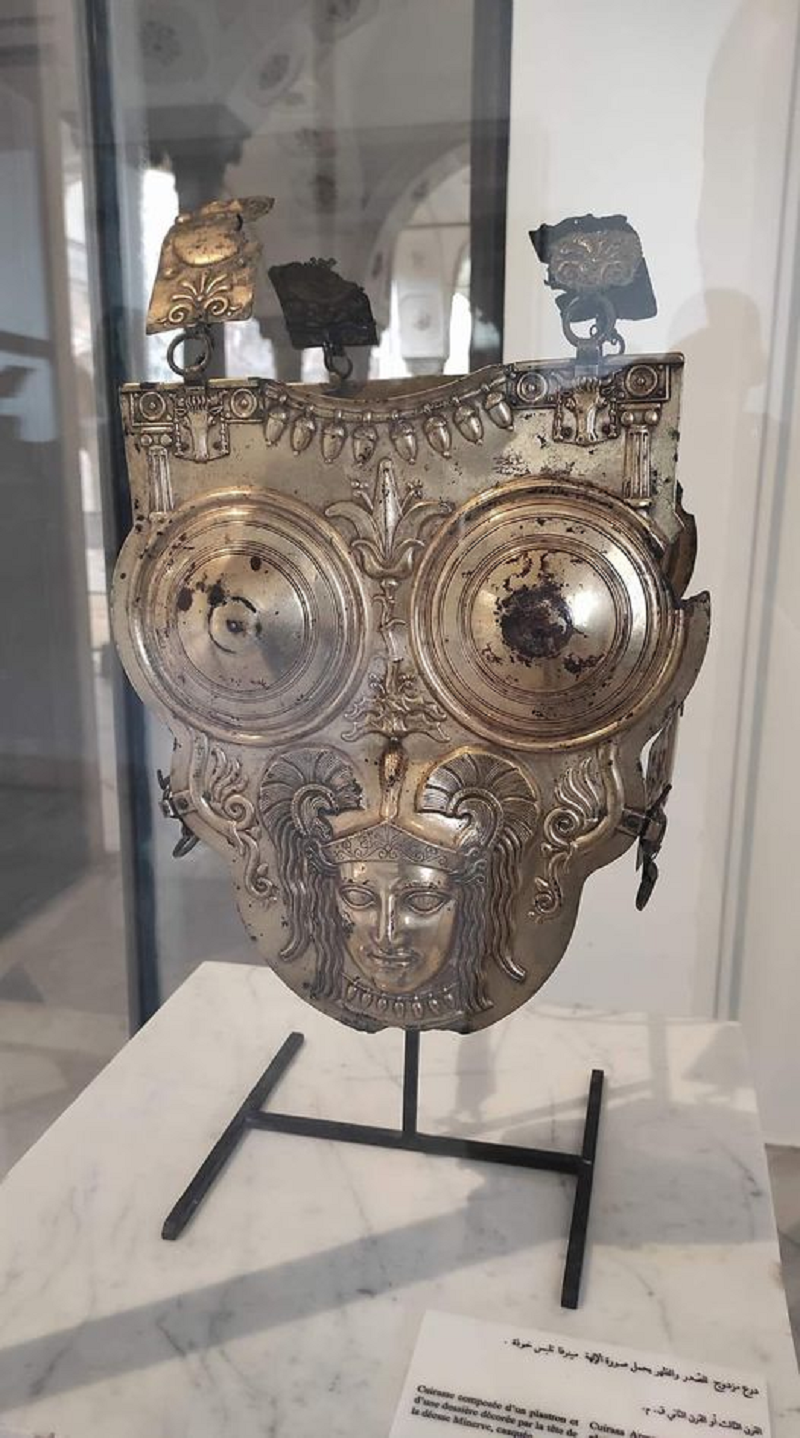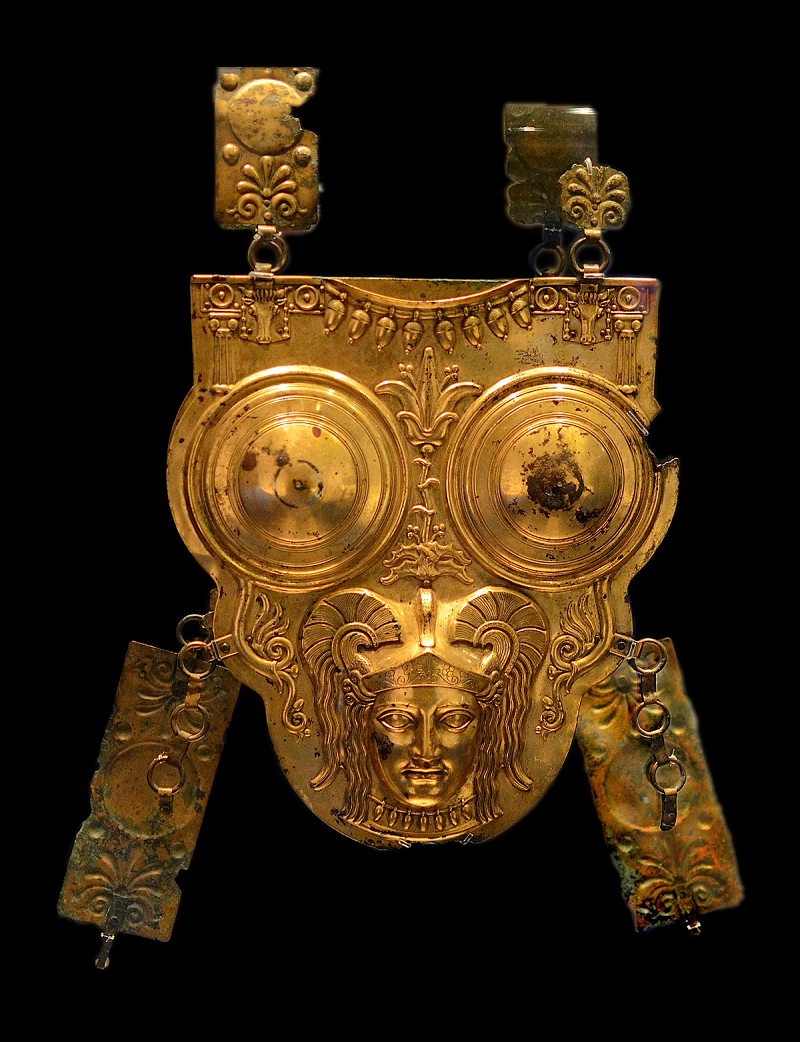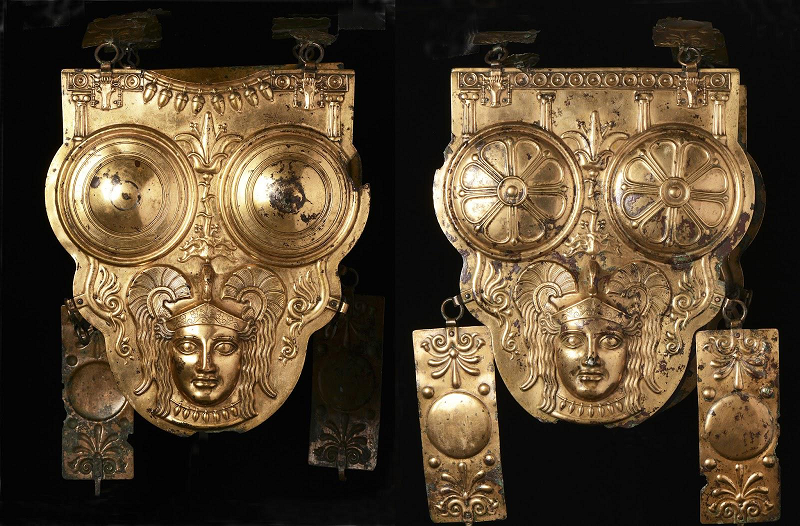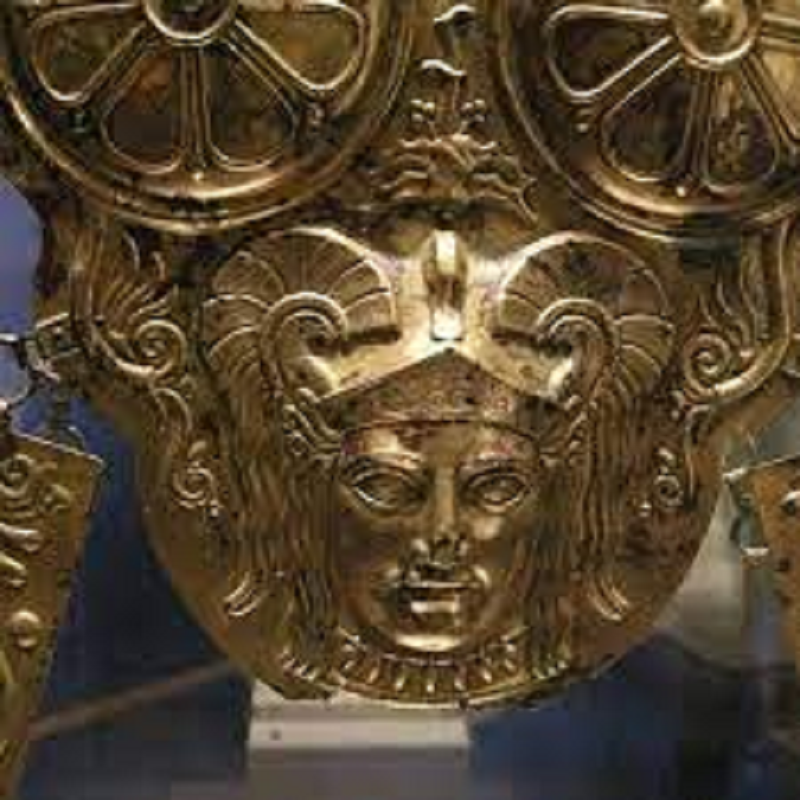Archaeology often unveils treasures that not only fascinate us with their beauty but also provide glimpses into the lives and cultures of ancient civilizations. Among these treasures is the Hellenistic gilded Bronze Cuirass, a remarkable artifact discovered in a Punic grave in Ksour Essef, Tunisia. Dating back to the 3rd-2nd Century BC, this cuirass not only boasts intricate craftsmanship but also bears the visage of Anat, the Canaanite goddess of war.

The Hellenistic gilded Bronze Cuirass stands as a testament to the rich tapestry of history that intertwines cultures and civilizations. Its origins trace back to Southern Italy, where it was crafted by skilled artisans of Italiote descent. The cuirass, adorned with the helmeted face of Anat, signifies the fusion of Greek and Canaanite influences—a reflection of the cultural exchange prevalent during the Hellenistic period.

Worn by the Samnites, ancient Italic people who often found themselves at odds with the expanding Roman Empire, the cuirass symbolizes defiance and resistance. The Samnites, renowned for their fierce spirit and military prowess, allied with King Pyrrhus of Epirus during the Pyrrhic War, challenging the might of Rome. Greek geographer Strabo even suggests that the Samnite civilization originated from a group of Sabine exiles, highlighting their complex history and interconnectedness with neighboring peoples.

The discovery of the Hellenistic gilded Bronze Cuirass in Tunisia initially sparked speculation about its connection to Hannibal’s expeditions during the Second Punic War (211-203 BC). However, subsequent examinations of the artifacts found within the tomb cast doubt on this hypothesis. While the cuirass may have been crafted during the same period, its presence in Tunisia raises questions about its journey across the Mediterranean and the individuals who wielded it.

The dating of the cuirass remains a subject of debate among archaeologists. Some argue for an end-of-2nd Century BC timeframe, while others suggest dates ranging from the 2nd to 1st Centuries BC or even around 300 BC. Regardless of its precise age, the cuirass serves as a timeless relic, inviting us to unravel its mysteries and explore the complexities of the ancient world.

As we delve deeper into the significance of the Hellenistic gilded Bronze Cuirass, we are reminded of the interconnectedness of civilizations and the enduring legacy of cultural exchange. Its intricate design and symbolic imagery offer insights into the beliefs and values of the people who crafted and wore it. Whether as a symbol of defiance against imperial expansion or a testament to artistic craftsmanship, the cuirass continues to captivate and inspire us today.

In the annals of archaeology, the Hellenistic gilded Bronze Cuirass occupies a special place—a relic that transcends time and space, weaving together the threads of history, culture, and craftsmanship. Its discovery in a Punic grave in Tunisia serves as a reminder of the interconnectedness of ancient civilizations and the enduring legacy of their artistic and martial traditions. As we continue to unravel the mysteries of this remarkable artifact, we gain a deeper understanding of the past and a renewed appreciation for the richness and diversity of human history.


